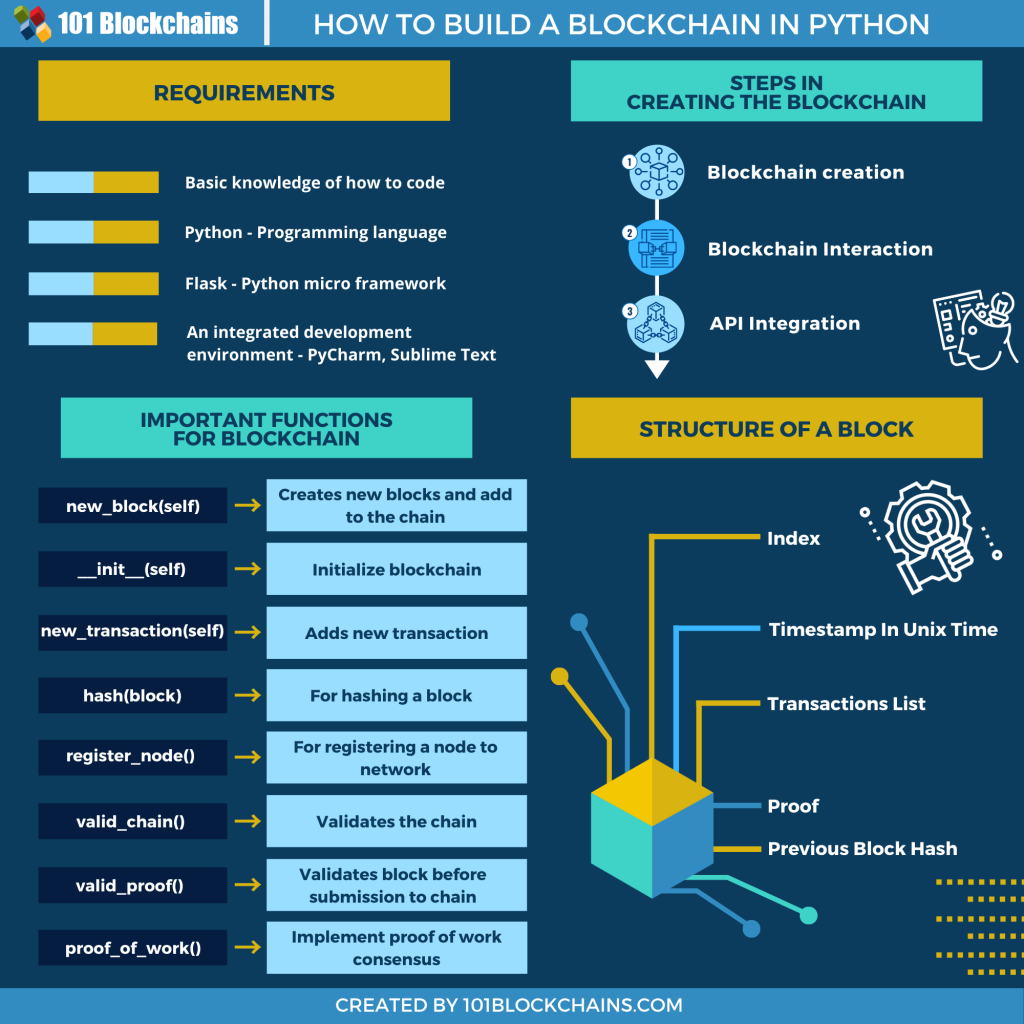The Ultimate Guide: Blockchain Technology Tutorial In Python – Master The Power Of Cryptocurrency Now!
Blockchain Technology Tutorial Python: A Comprehensive Guide
Greetings, Readers! In this article, we will delve into the world of blockchain technology and explore its applications using the Python programming language. Blockchain has gained immense popularity in recent years for its ability to securely store and transmit digital information. Through this tutorial, you will gain a solid understanding of the fundamental concepts of blockchain and learn how to implement them using Python. So, let’s dive in!
Introduction
1. What is Blockchain?
2 Picture Gallery: The Ultimate Guide: Blockchain Technology Tutorial In Python – Master The Power Of Cryptocurrency Now!


Blockchain is a decentralized and distributed ledger technology that allows multiple parties to maintain a shared database without the need for a central authority. It consists of a chain of blocks, with each block containing a list of transactions. These transactions are verified by network participants and added to the blockchain in a chronological order.
2. Who Created Blockchain?

Image Source: activestate.com
The concept of blockchain was introduced in 2008 by an anonymous person or group of people using the pseudonym Satoshi Nakamoto. Nakamoto unveiled the blockchain technology as a key component of the cryptocurrency Bitcoin.
3. When Was Blockchain Invented?
The whitepaper on blockchain was published by Satoshi Nakamoto in October 2008, and the first block, also known as the Genesis block, was mined in January 2009.

Image Source: 101blockchains.com
4. Where is Blockchain Used?
Blockchain technology has applications in various industries, including finance, supply chain management, healthcare, real estate, and more. It offers transparency, immutability, and security, making it suitable for a wide range of use cases.
5. Why is Blockchain Important?
Blockchain technology eliminates the need for intermediaries in transactions, reduces the risk of fraud, enhances security, and enables faster and more efficient processes. It has the potential to revolutionize industries by providing decentralized and tamper-proof systems.
6. How Does Blockchain Work?
Blockchain operates on a peer-to-peer network, where each participant maintains a copy of the blockchain. When a new transaction is initiated, it is broadcasted to the network, and the participants validate its authenticity. Once verified, the transaction is added to a new block, which is then appended to the existing chain. This chain is continuously updated across all participants, ensuring consensus and immutability.
Advantages and Disadvantages of Blockchain Technology in Python
Advantages:
1. Enhanced Security: Blockchain utilizes advanced cryptographic techniques to secure transactions and prevent unauthorized access.
2. Transparency: The decentralized nature of blockchain ensures transparency, as all participants can view the entire transaction history.
3. Efficiency: By eliminating intermediaries and automating processes, blockchain reduces transactional costs and improves efficiency.
4. Immutable Records: Once a transaction is added to the blockchain, it cannot be altered or deleted, ensuring data integrity.
5. Decentralization: Blockchain eliminates the need for a central authority, providing a trustless and decentralized environment.
Disadvantages:
1. Scalability: Blockchain currently faces scalability issues due to the large amount of data that needs to be processed and stored.
2. Energy Consumption: The process of mining and validating transactions in blockchain networks consumes a significant amount of energy.
3. Regulatory Challenges: The regulatory framework surrounding blockchain and cryptocurrencies is still evolving, posing legal challenges.
4. Lack of Governance: The decentralized nature of blockchain makes it difficult to establish governance and resolve disputes.
5. Complexity: Implementing blockchain solutions can be complex and require a deep understanding of the technology.
Frequently Asked Questions (FAQs)
1. What is the role of miners in the blockchain network?
Miners validate and verify transactions, add them to blocks, and compete to solve complex mathematical puzzles to earn rewards.
2. Can blockchain be used for purposes other than cryptocurrencies?
Yes, blockchain technology has various applications beyond cryptocurrencies, such as supply chain management, voting systems, and decentralized applications.
3. Are blockchain transactions reversible?
No, once a transaction is added to the blockchain, it becomes immutable and cannot be reversed.
4. How secure is blockchain?
Blockchain is highly secure due to its decentralized and cryptographic nature. However, vulnerabilities can exist in the implementation or smart contracts.
5. Can blockchain be hacked?
While hacking the blockchain itself is highly unlikely due to its decentralized nature, attackers can target vulnerabilities in the implementation, applications, or user interactions.
Conclusion
In conclusion, blockchain technology has emerged as a revolutionary concept with the potential to transform various industries. Through this tutorial, we have explored the fundamental aspects of blockchain and its implementation using the Python programming language. By leveraging the advantages of blockchain, such as enhanced security, transparency, and efficiency, organizations can streamline their processes and unlock new opportunities. It is essential to stay updated with the latest developments in the blockchain space and harness its potential for innovation.
Take the next step in your blockchain journey by diving into hands-on projects and exploring real-world use cases. Embrace this disruptive technology, and unlock the countless possibilities it holds. Happy blockchain coding!
Disclaimer: The information provided in this article is for educational purposes only and should not be considered as financial or investment advice. The use of blockchain technology and cryptocurrencies involves risks, and readers are encouraged to conduct their own research and consult professionals before making any decisions.
This post topic: Technology Tutorials



